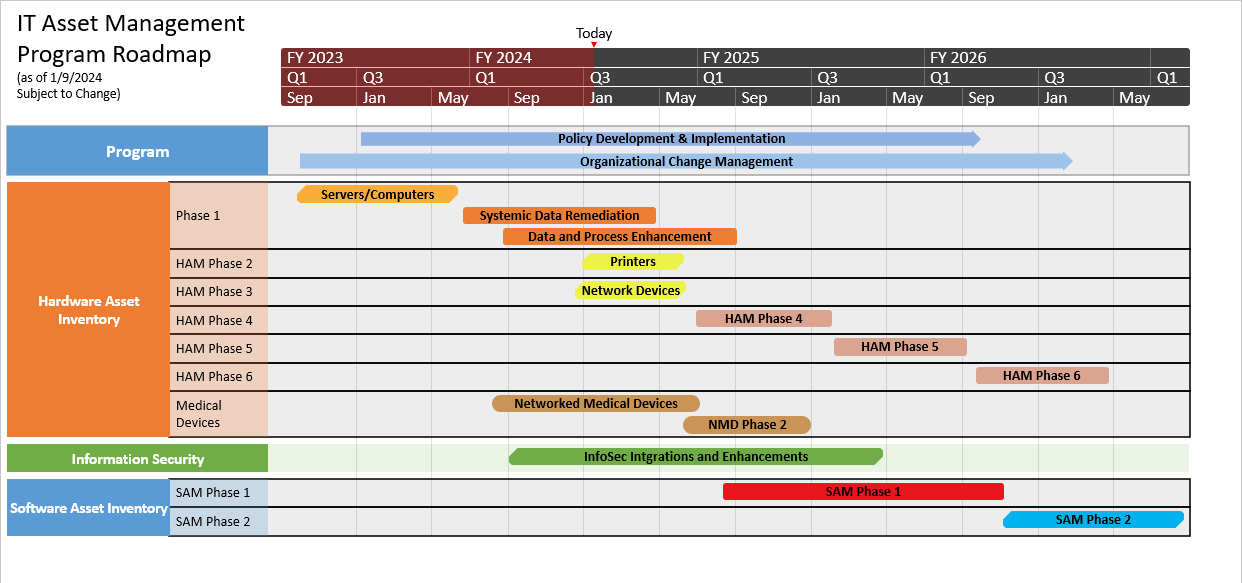
The Asset Management Program is designed to provide proficient, enterprise class IT Asset Management as a foundational practice that supports key business initiatives across the University. This multi-year program consists of multiple phases and covers three main areas of IT Asset Management:
- Hardware Asset Management (HAM), which involves processes, tools, and strategies of managing the physical components of computers and related systems, and will utilize ServiceNow to apply best practices for managing hardware asset data and its life cycle. Types (Classes) of hardware assets include: end user computers, servers, network infrastructure, and medical devices. Other hardware asset classes may be included.
- Software Asset Management (SAM) which tracks, evaluates, and manages software licenses, compliance, and optimization, and will utilize ServiceNow to apply best practices for managing software asset data and software licenses. SAM will utilize ServiceNow to apply best practices for managing software asset data and software licenses. Software categories include, at a minimum, software installed on in-scope hardware assets and prioritized SaaS products, which are yet to be determined. Other software categories may be included as time and budget allow.
- Service Mapping will create a list of critical IT services and map the associated configuration items (CIs) to them, enabling improved change controls, faster incident response, and proactive service outage assessments. A CI is any component that needs to be managed in order to deliver an IT Service.
Program Objectives
The program’s foremost goal is to create an accurate and complete centralized asset inventory in ServiceNow, and improve ServiceNow functionality within HAM, SAM, and IT Operations Management (ITOM). ITOM is the IT management and strategic approach to planning, building, and operating digital services, as well as technology, components, and application requirements in organizations.
- A centralized inventory will embody a full life cycle approach, meaning both hardware and software assets will be tracked from procurement, to maintenance, to disposal and/or retirement. This approach not only provides a complete picture of IT assets across the University, but also ensures IT assets are in optimal condition, improving customer service and support.
- Proper IT asset management allows for smoother financial planning, as there is a clear map of what assets will need to be replaced and when. This allows us to avoid overspending, underspending, or a sudden, unexpected budget need. Planned campus and departmental asset reports will also be used to plan technology refreshes and annual budgets.
- Ensuring all our hardware and software assets are up-to-date and monitored is an important aspect of information security and risk management practices. Outdated equipment and expired licenses leave gaps and vulnerabilities. Real-time analytics will be available to measure and track asset health and performance, ensuring we meet security and compliance requirements.
Program Roadmap
